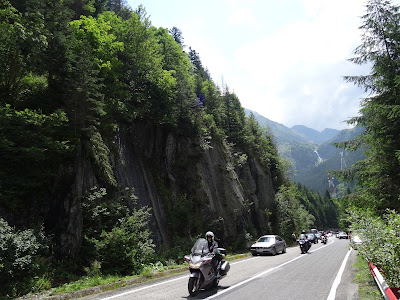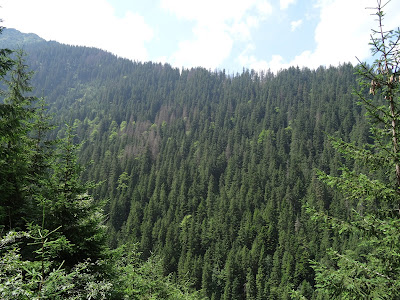Avrig (Romanian pronunciation: [aˈvriɡ]; German: Freck,
Hungarian: Felek) is a town in the Sibiu County, Romania. It has a population
of 12,815 and the first documents attesting its existence date to 1346. The
town administers four villages: Bradu (Gierelsau; Fenyőfalva), Glâmboaca
(Hühnerbach; Glimboka), Mârşa and Săcădate (Sekadaten; Oltszakadát). It is
situated in the historical region of Transylvania. It lies on the left bank of
the river Olt (at the mouth of the Avrig River), close to the Făgăraş Mountains,
at about 26 km (16 mi) from Sibiu on the road towards Braşov. It is the main
starting point for the trekking routes in the western part of the mountains,
and also on access point at a great number of chalets in the mountains: Cabana
Poiana Neamţului, Cabana Bârcaciu, Cabana Ghiocelul.
-------------------------------------
The Transfăgărășan (trans [over, across] + Făgăraș) or DN7C,
also known as Ceaușescu's Folly, is a paved mountain road crossing the southern
section of the Carpathian Mountains of Romania. It has national-road ranking
and is the second-highest paved road in the country after the Transalpina. It
starts near the village of Bascov, near Pitești, and stretches 90 kilometres
(56 mi) to the crossroad between the DN1 and Sibiu, between the highest peaks
in the country, Moldoveanu and Negoiu. The road, built in the early 1970s as a
strategic military route, connects the historic regions of Transylvania and
Wallachia.
The Transfăgărășan was constructed between 1970 and 1974
during the rule of Nicolae Ceaușescu as a response to the 1968 invasion of
Czechoslovakia by the Soviet Union. Ceaușescu wanted to ensure quick military
access across the mountains in case of a Soviet invasion. At the time, Romania
already had several strategic mountain passes through the Southern Carpathians,
whether inherited from the pre-communist era (the DN1 and the high-pass DN67C)
or built during the initial years of the Communist regime (the DN66). These
passes, however, were mainly through river valleys, and would be easy for the
Soviets to block and attack. Ceauşescu therefore ordered the construction of a
road across the Făgăraş Mountains, which divide northwestern and southern
Romania.
Built mainly by military forces, the road had a high
financial and human cost. Work was carried out in an alpine climate, at an
elevation of 2,000 metres (6,600 ft), using roughly six million kilograms
(5,900 long tons; 6,600 short tons) of dynamite, and employing junior military
personnel who were untrained in blasting techniques. Many workers died;
official records state that only 40 soldiers lost their lives, but unofficial
estimates by workers put the number in the hundreds. The road was officially
opened on 20 September 1974, although work, particularly paving of the roadbed,
continued until 1980.





















































Niciun comentariu:
Trimiteți un comentariu